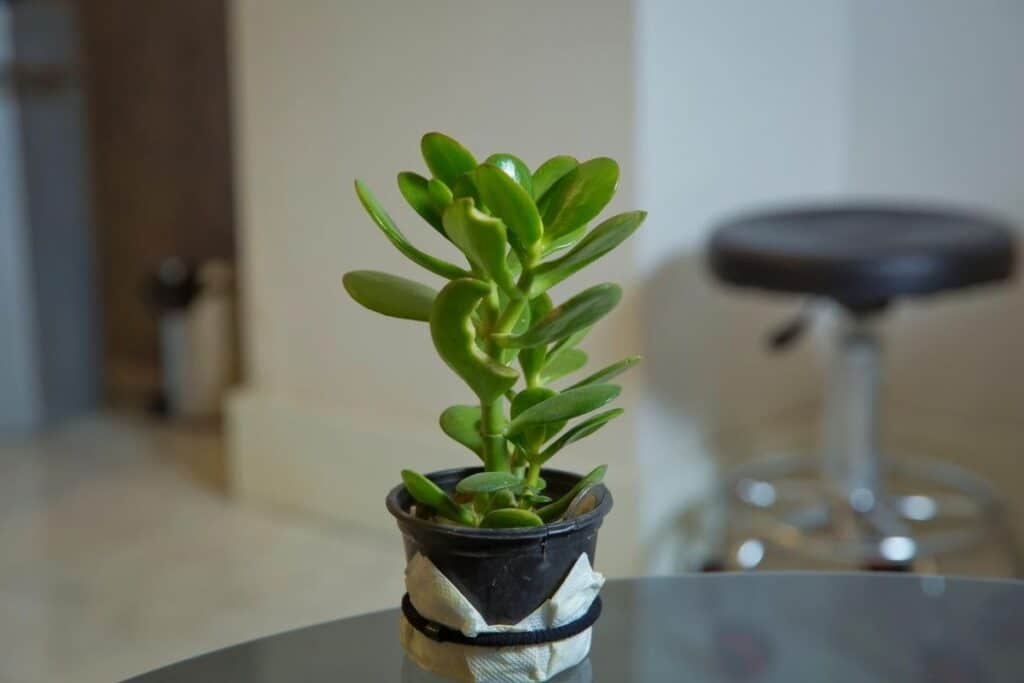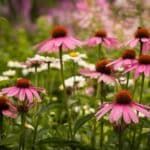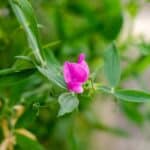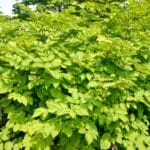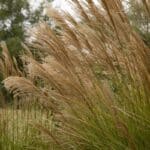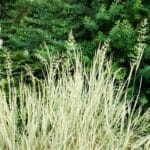It comes with good luck and brings forth prosperity. That is what some cultures believe about jade plants. Whether or not this is true, these plants are still a catch with their beautiful, gem-like leaves and striking star-shaped flowers. They are surely worthy of a spot, maybe even an entire shelf, in our homes.
What is a Jade Plant?
Crassula ovata, commonly known as jade plant, is a beautiful succulent from the plant family Crassulaceae. It originated from South Africa where it grows on rocky hillsides. Nowadays, it is one of the most cultivated succulents for ornamental use.
Jade plants tend to have smooth, glossy, rounded, jade-colored leaves that look almost like the actual gemstone. They resemble bonsai trees with fleshy leaves growing in alternating pairs along thick branches. The leaves develop a pinkish tinge when placed under direct sunlight.
The plant itself can grow up to 10 ft. in height and has a woody appearance, although the inside is fleshy and succulent. The leaves also resemble coins, which is why the jade plant is also known as a lucky plant, money plant, silver dollar plant, or money tree.
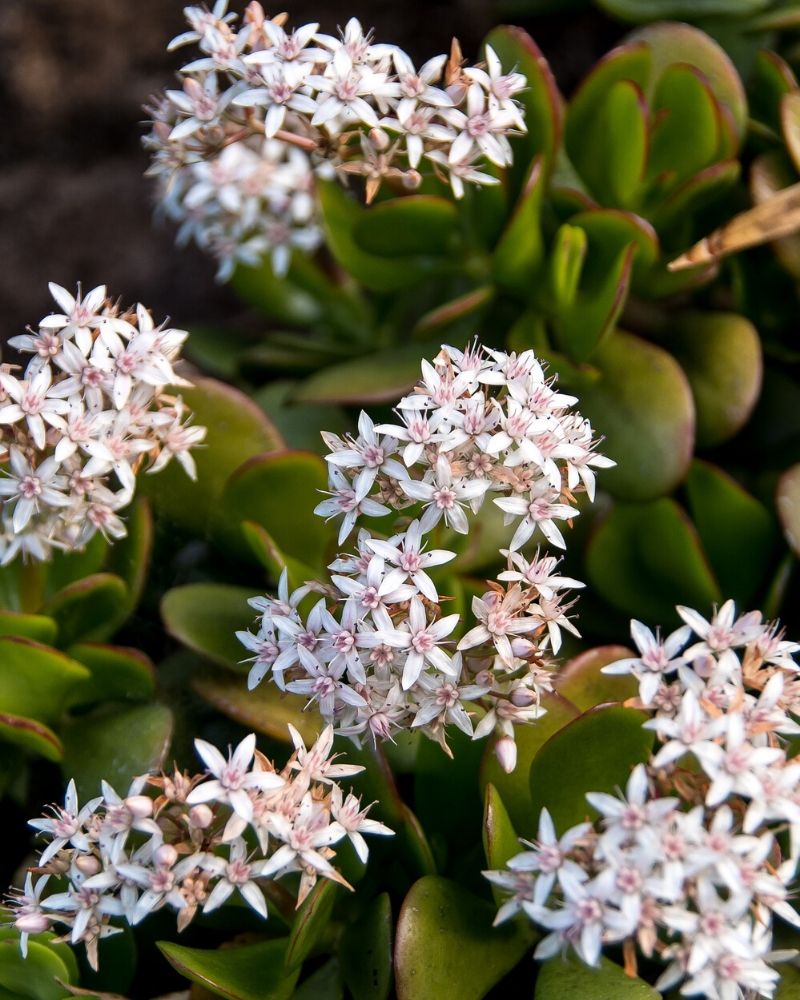
Do Jade Plants Bloom?
Like many types of indoor plants, indoor jade plants seldom bloom unlike those found in the wild but when they do, the sight is spectacular.
Mature jade plants bloom in mid-winter to early spring. The flowers are borne in a cyme inflorescence on the top of the branches. They are small, star-shaped, and colored white or pink and give off a sweet, floral scent (2,3).
What Are Some Common Types of Jade Plant?
Crassula ovata has several cultivars. They vary in size, color, and shape of the fleshy leaves, and flowers. Here are some commonly known cultivars.

‘Pink Beauty’
This variety grows up to 5 ft. tall and has a characteristic red coloration on the leaf margins. It is one variety of jade plant that is prized for its starry flowers which are small and have a delicate pink color.
‘Baby Jade’
As the name suggests, this is a smaller variety of jade plants, reaching up to 2 ft. tall. The leaves of Baby Jade are green to light green in color and may develop a reddish tinge when placed in direct sunlight.
‘Gollum’
A rather unusual variety of jade plants, Gollum jade features long, tubular, trumpet-shaped leaves. This variety grows up to 18 inches in height.
‘Hobbit’
This is another unusual variety of jade plants. It features spoon-shaped leaves flushed red at the tips. This variety grows up to 3ft. tall.
‘Hummel’s Sunset’
An award-winning variety of jade plant, Hummel’s Sunset is famous for their characteristic round fleshy leaves flushed with the colors of sunset, yellow to orange tips and red margins. This variety grows into a bushy shrub about 3ft in height.
‘Tricolor’
This is one of the attractive varieties of jade plant. Tricolor, otherwise known as ‘Lemon and Lime’, features striking green leaves patterned with creamy white to pale yellow stripes, and pinkish tips. This variety grows up to 1ft in height.
How to Take Care of Jade Plants
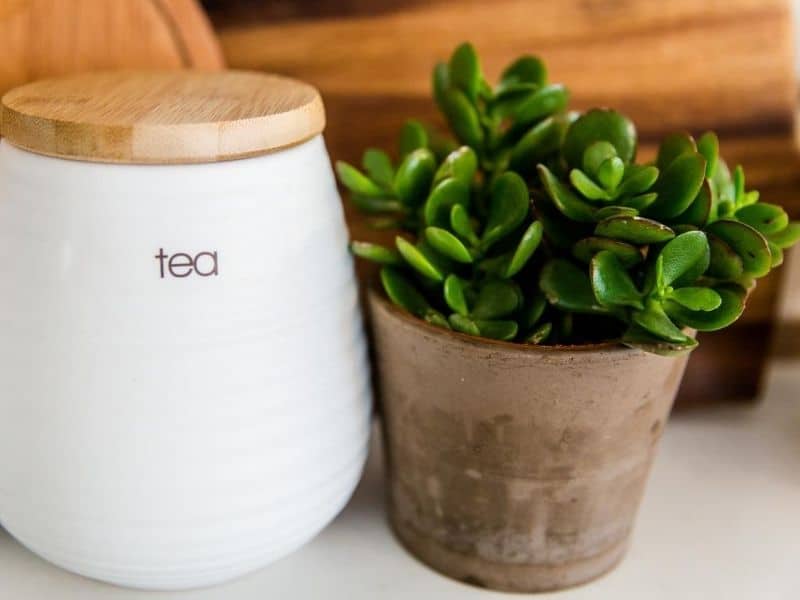
Sunlight
Jade plants need plenty of bright light to thrive beautifully. Not enough sunlight can cause the healthy jade plant to become stringy and weak.
On the other hand, too much sunlight or direct exposure to sunlight can cause burning of the leaves. When growing jade plants outdoors, place them in shaded areas (i.e. under a tree) where they can get plenty of indirect light.
Indoor jade plants should be placed where they can get lots of sunlight. You can also place them outside under indirect sunlight for at least 4-hours a day (2,4).
Temperature and humidity
Jade plants prefer average temperatures ranging from 65-70oF (15-21oC) with low humidity. If you want to increase the chance of blooming in winter, a 6-week cool rest of 50-60oF (13-16oC) will do the trick (2).
Water
Like any other types of succulents, jade plants do not need frequent watering as they tend to develop root rot when overwatered. Water your jade plants regularly during spring and summer while making sure to let the soil dry out before the next watering.
In winter, put off watering and let the potting soil dry out as your jade plant enters a rest period.
Potting/growing media
The best soil for jade plant needs to be rich and well-draining soil. Commercial cactus or succulent soil can be used, or you could make your own potting mix with equal parts topsoil and perlite.
Fertilizer
Jade plants will need fertilizer especially during the growing season (spring and summer). During this time, feed them with a balanced fertilizer diluted to half strength every two to three weeks (5). The fertilizer will contribute greatly to the growth and vibrancy of the leaf color of your jade plant.
Common Pests and Diseases
Jade plants are susceptible to mealybugs and plant lice. They can cause leaf drop and weakening of the plant. Get rid of these pests simply by rinsing them with water.
Pruning
Pruning jade plants could help in keeping them compact and growing profusely. It also helps the plant in getting accustomed to supporting the weight of the heavy leaves. Pruning should be done in spring when the plant is actively growing.
Propagating Jade Plants
Jade plants can be propagated via stem or leaf cuttings. For stem cuttings, a portion of a healthy stem should be cut above a node. This portion should have at least one node above the cut.
Remove the lower, mature leaves and allow the cut end to dry and form a callous. Roots will soon emerge from the callous, and the woody stems can be planted in a well-draining potting mix. Water the plant occasionally.
The most common method for propagating jade plants is through leaf cuttings. For this method, the younger, medium-sized leaves should be chosen. Remove the leaf cleanly from the stem and place it in a dry area.
Similar to the stem cutting method, the wound should dry up and develop a callus. After some time, roots will develop from the callous and the leaf will begin to shrivel up. Transfer the rooted leaf to a well-draining potting mix and water occasionally.
When pruning or propagating jade plants, proper handling and care should be observed as the sap is known to have a mildly irritating effect. The plant is also mildly toxic to cats and dogs causing colic and diarrhea when ingested (6).
FAQs
Does jade plant need direct sunlight?
Yes, Jade plants prefer bright, indirect sunlight but can tolerate some direct sunlight, especially in the morning or late afternoon. Avoid exposing them to intense, direct sunlight for extended periods, as this can lead to sunburn.
How do you care for a jade plant indoors?
To care for a jade plant indoors, place it in a location with plenty of natural light, such as near a south or west-facing window. Allow the soil to dry out between waterings, then water thoroughly, ensuring excess water drains away. Jade plants prefer temperatures between 65-75°F (18-24°C) and can benefit from occasional fertilization during the growing season.
Why do jade leaves fall off?
Jade leaves may fall off due to overwatering, underwatering, low humidity, or sudden changes in environmental conditions. Ensure proper watering practices, provide adequate humidity, and avoid placing the plant near drafts or heating vents to minimize stress on the plant.
How do I make my jade plant bushy?
To encourage bushy growth in a jade plant, prune it regularly by pinching back the growing tips or removing leggy or elongated branches. This encourages branching and produces a fuller, more compact plant. Additionally, providing adequate sunlight and appropriate watering and fertilization can promote healthy growth and development.
Up next: How to Care for Jade Bonsai Tree
References
Reference List
(1) Lawler J., Ziegler H. “Feng Shui Your Garden for Dummies”. John Wiley and Sons. 2011.
(2) Pleasant B. “The Complete Houseplant Survival Manual: Essential Gardening Know-how for Keeping (Not Killing!) More than 160 Indoor Plants”. Storey Publishing. 2012. P 79.
(3) Baldwin D. “Succulent Container Gardens: Design Eye-Catching Displays with 350 Easy-Care Plants”. Timber Press. 2010. P 88.
(4) Bagnasco J., Reidmuller B. “Succulents: Choosing, Growing, and Care for Cactuses and other Succulents”. Cool Springs Press. 2019. P 123.
(5) Staehling A. “Happy Houseplants: 30 Lovely Varieties to Brighten Up Your Home”. Chronicle Books. 2017. P 62.
(6) Fuller T.C. McClintock E.M. “Poisonous Plants of California”. University of California Press. 1986. P 125.
Close
Image fotoqraf.tk.mail.ru/depositphotos

